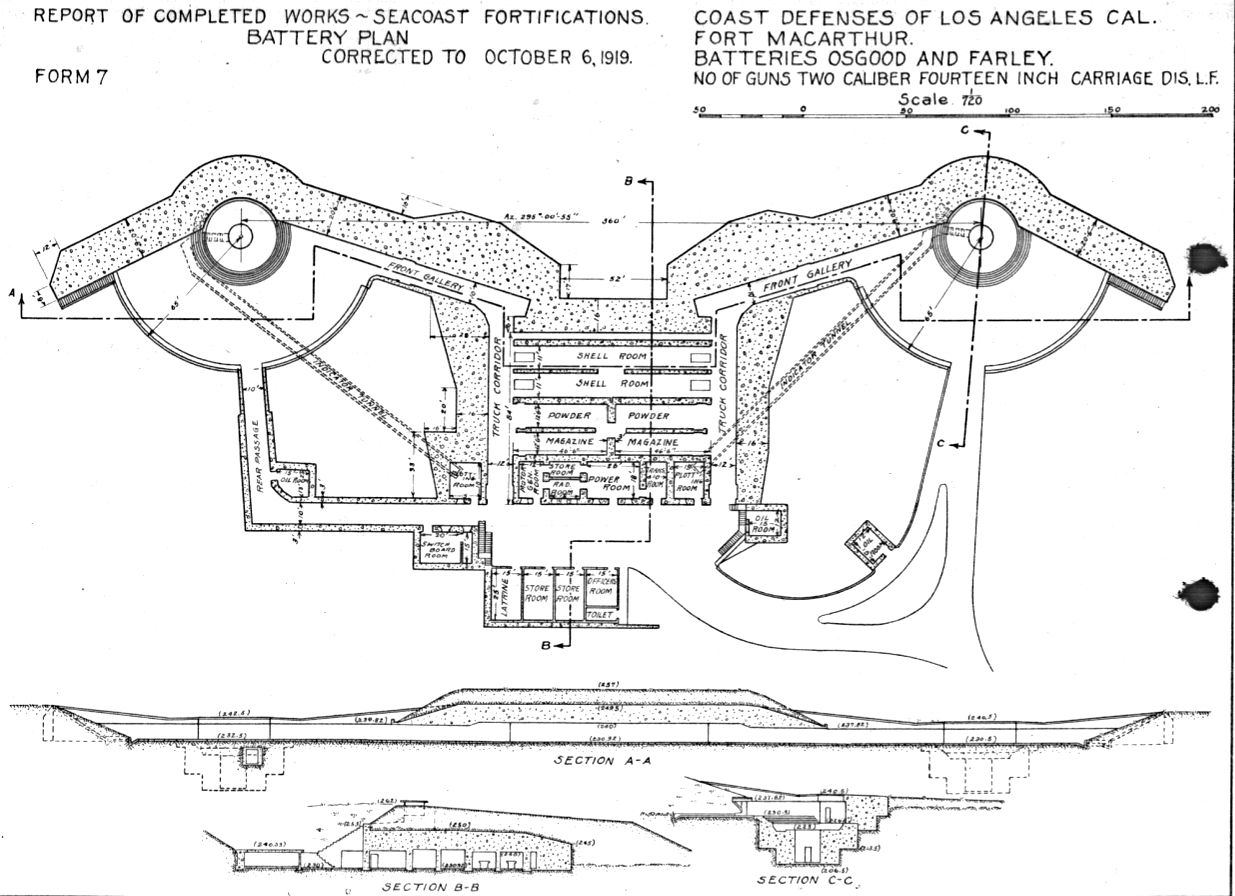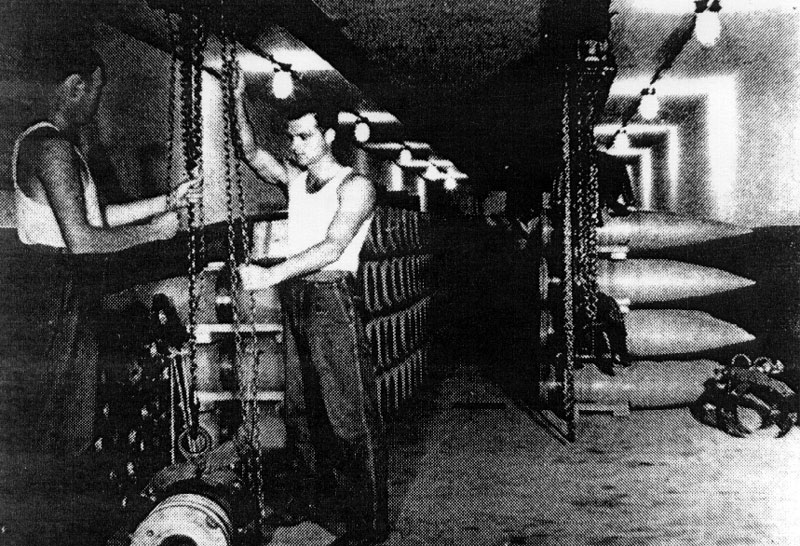

In 1916 work began on the first of the Endicott batteries at the Upper Reservation at Fort MacArthur. This battery was armed with the first 14-inch rifles on the west coast, the largest anywhere at the time. In addition these large guns were mounted on Buffington-Crozier disappearing carriages. The battery of two guns faced south and overlooked the ocean.
The battery was completed on October 10, 1919 at a cost of $211,426, and transferred to the Coast Artillery on that date.
The gun at Battery Osgood was 48-feet 6-inches long, Model 1910, No.13 MI made by the Watervliet Arsenal. It was mounted on July 31, 1923 on a Model 1907 M1 disappearing carriage No. 6 manufactured by the Watertown Arsenal in 1914. The gun at Battery Farley was 48-feet 6-inches long, Model 1910, No.17 M1 manufactured at the Watervliet Arsenal and mounted on June 30, 1917 on a disappearing carriage, Model 1907 M1 No. 21, manufactured at the Watertown Arsenal in 1917. Each gun barrel weighed 50 tons.
These 14-inch rifles could fire a 1,560-pound projectile 14 miles out into the Catalina Channel. However, firings of the guns were a rare event due to the damage caused by the concussions on buildings. All firings were banned in 1928 until January 1941. Battery Osgood's gun was fired 116 times and Battery Farley's fired 121 times.
The battery commander's stations were located on top of the magazines above and behind the batteries. During firings, the officer in charge of the battery stood there so he could keep track of the target the battery was firing on and monitor all incoming communications from the base end stations and control the activities of the plotting room, gun and magazine details. In addition, the battery commander was in contact with the Fire Commander and Fort Commander at their respective stations who determined the target to be engaged. The station was equipped with a Model 1910 Azimuth scope and a Model 1907 depression range finder so firing coordinates could be determined from this station as well. The plotting rooms were located in the middle of the battery on the rear corridor. The stations and the front of the battery were designed to blend in with the natural terrain of the hillside to make it difficult for the enemy to locate. The parapet walls in front of the gun emplacements are 20 feet in thickness.
Although constructed as one twin gun emplacement, each gun was originally designated as a separate tactical battery, hence the two names. Later, the battery was considered to be a single unit. In 1916, under War Department General Order No. 15, Battery Osgood was named in honor of Brigadier General Henry B. Osgood of the Coast Artillery Corps who died March 12, 1909, and Battery Farley was named in honor of Brigadier General Joseph P. Farley of the Ordnance Department who died on April 6, 1912. Both men were Civil War veterans.
The first regular Army unit assigned to man the battery was the 4th Company, 38th Artillery. They were transferred from Fort Winfield Scott and arrived on March 23, 1917. The 38th Artillery was part of the Army of the Potomac during the Civil War. In 1917, the unit was designated the 3rd Anti-aircraft Company prior to leaving for France in November 1917.
Battery Osgood-Farley saw limited service during World War II. Battery Osgood-Farley's guns were declared surplus in 1944 and cut up for scrap sometimes after 1946. The Army continued to use the rooms and corridors of the battery for various purposes with little modifications until 1974. While the guns and some of the electrical equipment were removed, much of the rest of the hardware were left intact. The Army recognized the historical significance of Battery Osgood-Farley and had it placed on the Register of National Historical Places in 1976. The corridors of Battery Osgood-Farley house the Fort MacArthur Military Museum, which is dedicated to the preservation of the military history of this area.



